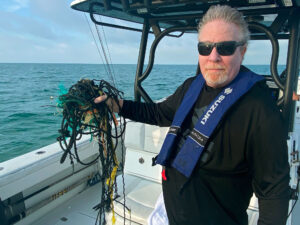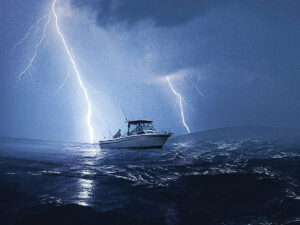From Florida to New York, Atlantic anglers had one of the strangest fishing seasons on record this past summer thanks to the cold water upwelling phenomenon. Where water temperatures are commonly in the 80s in mid-July, this season they measured in the 60s. And yes, fishing suffered-and prospered. Although anglers hunting pelagics such as tuna and wahoo went for days on end without a hookup, those that recognized the changes in the weather and took advantage of it filled their coolers. Fish that like cooler waters thrived; species such as sea bass and mako shark, which normally thin out when water rises into the upper 70s, kept up a steady summertime run. These tips will help you learn to work with the weather instead of against it.
Don’t fight reality. When the temperatures fell and tuna disappeared, many anglers spent days on end spinning their wheels. Wiser guys went fishing for sea bass instead and came home with their limit.
Look where the water goes. Anglers in Florida realized that the water in the bays was warmer than in the surf-and thus discovered barracuda and kingfish had moved inside the inlets.
Follow where the wind blows. Consistent southwest winds made inshore waters dirty. But anglers who ran to the sheltered northeastern edge of points and capes discovered clear water and better fishing.
Change bait. This season’s lack of baitfish and squid meant fish had to feed on something else. This summer, tuna focused on scallops and fed heavily on discards from commercial boats. Anglers who tossed butterfish, trolled ballyhoo, and chunked squid came up short, whereas those who baited with scallops or clam belly hooked up regularly.









